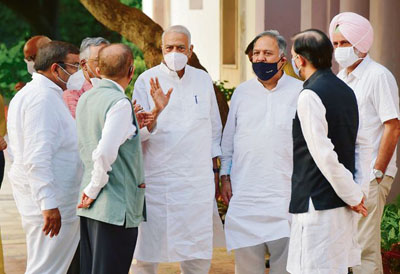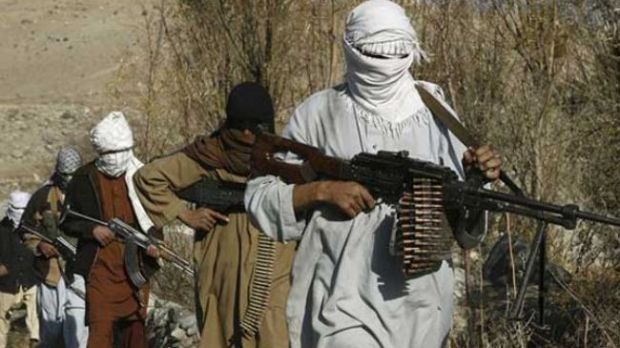
By Yogendra Yadav

“What the Opposition needs to demonstrate at this stage is political cohesion. It needs to demonstrate a unity of purpose, a shared agenda (not just a hastily drawn up minimum programme) that inspires hope, an alternative approach to governance, a capacity to work together by subordinating their differences.”
Opposition unity is among the most fantoosh but faltu preoccupations. At this juncture of Indian politics, it is at once a critical ask and a futile pursuit. This was the flavor of the month gone by and understandably so. The BJP’s defeat in West Bengal has opened the oppositional spaces and encouraged routine confabulations. It does not take much to see that any project to take on the BJP at the national level must gather in some way the 63 per cent voters who did not vote for the BJP or its allies in 2019. Hence, the temptation to return to some of the most over-rated moves of Opposition unity. All the tested and tired political faces coming together to oppose Prime Minister Narendra Modi is one of the laziest and disastrous political recipes of our time.
It is pointless to discuss Opposition unity unless we are clear about three things: Who counts as Opposition? What kind of unity are we talking about? And, is Opposition unity all that we need to take on Modi’s BJP?
The idea of a hold-all Opposition, coming together of anyone and everyone who happens to be opposed to Modi, or to the BJP or to its current ideology, is both impossible and counter-productive. It is humanly impossible to achieve a harmonious merger of egos, ambitions and designs of all those who fall under the broad rubric of the Opposition. Even if this miracle were to happen, the cost of stitching together such an alliance would clearly outweigh its possible gains. It would have to be a sub-optimal coalition in terms of its efficacy in defeating the BJP. Besides, it might help Modi play the lone warrior who is taking on an entire ‘gang’. This could also help the BJP’s booth workers go for successful counter-mobilization of the Hindus.
To abandon the idea of a hold-all Opposition unity is to give up on the current quest for a coalition of the willing. The Opposition here must be a selectively crafted coalition of the deserving. Those who enter such a coalition would have to show what they bring to the table. Those who bring heft in terms of votes would be the most obvious candidates. It is impossible to think of any meaningful Opposition unity without the Congress and many of the key regional players who have taken on, and many times defeated, the BJP. The only filter here would be the willingness to subordinate individual or party ambitions to the collective project.
The definition of Opposition must not be limited to political parties, that too electorally successful ones. We must not forget that the real opposition to the BJP hegemony has come from non-party peoples’ movements. Popular mobilization is as important as electoral success.
The idea of ‘unity’ must be expanded beyond a one-time electoral alliance to a more enduring political union. The most common understanding of Opposition unity is that of the non-BJP parties forming a pre-election alliance for seat-sharing and vote-pooling.
But we tend to forget that such a unity is not relevant for most states of the country. There are states such as Kerala, Punjab, Tamil Nadu and Andhra Pradesh, where the BJP is still not an electoral force that calls for a unity of the non-BJP forces. Then there are states such as West Bengal, Chhattisgarh and Odisha, where the dominant non-BJP party does not need an alliance partner. Then there are BJP-Congress contest states such as MP, HP, Uttarakhand, Gujarat and, arguably Rajasthan, where the problem is not the lack of Opposition unity but the lack of an Opposition itself. The Congress is unable to take on the BJP and does not have anyone else to align with.
So, the formula of a pre-electoral alliance holds force in only a few states: Karnataka, Maharashtra, Bihar, Jharkhand and UP. With more than 200 Lok Sabha seats, these states carry a lot of weight, but they cannot set the template for Opposition unity in the rest of the country where the need is coordination rather than alliance.
At this stage, we need political unity more than electoral unity of the Opposition. We could do without the premature and necessarily fractious negotiations of a nationwide electoral alliance. What the Opposition needs to demonstrate at this stage is political cohesion. The voters, especially those who may have recently got wary of the BJP, do not doubt that anti-Modi leaders will come together to unseat him. They doubt if these leaders would do so in a meaningful way. They doubt if the Opposition parties can deliver a better and stable government. They doubt if these leaders can hang together even for some time.
So, the Opposition needs to demonstrate a unity of purpose, a shared agenda (not just a hastily drawn up minimum programme) that inspires hope, an alternative approach to governance, a capacity to work together by subordinating their differences.
Above all, we must realize that while Opposition unity of some sorts is necessary, it is certainly not sufficient. At this stage, the country is not ready to anyhow throw the BJP out. There is disenchantment with this government and PM Modi, but it has not reached a point where the people would vote for a lamp post to throw the incumbent out. They are anxiously looking for an alternative that is at least as attractive as Modi was in 2014.
As it stands today, the Opposition does not fit the description. It lacks credibility. It does not have a message of hope, a vision for the nation. It does not have messengers who inspire confidence, leaders who can be entrusted with the country’s future. This deficit cannot be made up by Opposition unity. Any Opposition unity that glosses over this lacuna is bound to magnify its own deficit and likely to fail in attracting new voters.
The country needs not just a vipaksha, but a pratipaksha. Vipaksha is limited to offering opposition and criticism; pratipaksha offers constructive criticism and feasible alternatives. Vipaksha is aimed at power-capture, pratipaksha is guided by a national purpose. Vipaksha is episodic, mostly active for elections; pratipaksha is omnipresent. Vipaksha has to be united; pratipaksha is unified to begin with.
The Opposition needs a glue to hold itself together and a glow to connect it to the people. That cannot happen through a mechanical stitching together of an alliance of the existing Opposition parties. The oppositional space needs a magnet to pull all the forces that seek to reclaim the republic. That magnet cannot be any one party or a leader. It has to be a coming together of citizens who enjoy credibility, movements that have demonstrated resilience and ideas that hold out hope.
Once this is achieved, the coming together of the existing Opposition parties and leaders can and will follow.
(The author is National President, Swaraj India)





Be the first to comment